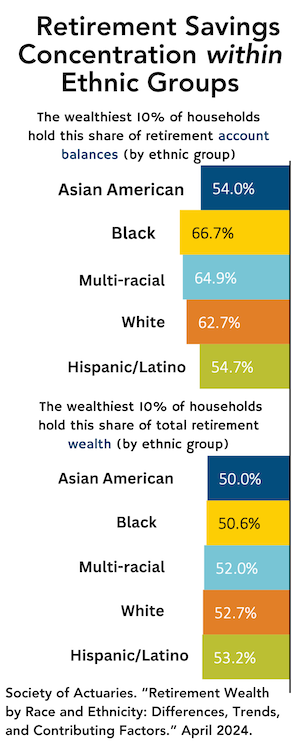
Bermuda isn’t the only island paradise where U.S. life/annuity companies can execute what RIJ has called the “Bermuda Triangle” strategy. The Cayman Islands, a British Overseas Territory, might be even more suitable for capturing what some call the “inefficiencies” of US statutory capital-based financial regulation.
One upstart annuity issuer with a Cayman-affiliated reinsurer is Ibexis Life. The company sold $453 million worth of fixed indexed annuities (FIAs) in 2023 and reinsured 80% of those liabilities with Ibexis Re, its sibling company in the Cayman Islands. Investcorp, the $50+ billion Bahrain-based firm that in 2021 financed what would become Ibexis, created a New York based group called Investcorp Insurance Solutions, which oversees the management of Ibexis’ assets.
“FIA Plus” is Ibexis Life’s flagship fixed indexed contract. It has some eye-catching features, like a 23.5% cap on the S&P 500 Price Index (for contract owners willing to put accumulated gains at risk) and volatility-controlled bespoke index options from Bank of America and HSBC.
The contract, like many FIAs, offers term-lengths of 5, 7 and 10 years. There are optional premium bonuses of 8%, 11%, and 16% for each term, respectively. There’s a “bailout” feature that releases clients from the contract penalty-free if the S&P 500 Index returns falls short of a promised rate. Ibexis has an A-minus rating from A.M. Best.
That Investcorp wants Ibexis to replicate the asset manager-aligned business model pioneered by Apollo, Blackstone and others, is reflected in Ibexis’ C-suite members. CEO Nate Gemmiti helped launch Athene as an Operating Partner at Apollo, ran Cayman-based Knighthead Annuity and chaired the Cayman International Reinsurance Company Association (CIRCA).
Chief Distribution officer Ryan Lex spent 10 years at Apollo, wholesaling Athene FIAs through independent marketing organizations, or IMOs. Chief Investment Officer Todd Fonner came from Blackstone Insurance Solutions, and had been a senior manager at Renaissance Re.
Ibexis epitomizes the asset-manager-driven life/annuity companies that have been disrupting the U.S. life/annuity business since 2010. A.M. Best recently noted the “innovative third party nature of [Ibexis’] business model,” which involves outsourcing much of what many bricks-and-mortar life/annuity companies still do internally, like policy administration and claims handling.
A FILA revival

Nathan Gemmiti
Ibexis CEO Nathan Gemmiti spoke with RIJ recently about the way FIA Plus lets contract owners take what he called “defined risk” in order to reach for higher crediting rates, about FIA issuers’ use of “volatility controlled” and “excess return” indexes, and about how Ibexis arrives at an FIA options budget.
Among its many options, FIA Plus incorporates a “fixed index-linked annuity” or FILA feature. A FILA is a hybrid between a standard FIA and a registered index-linked annuity (RILA). Fidelity and Guaranty Life brought this type of product to market in mid-2021. But the original F&G product suffered from “low sales and lack of imitation” and is no longer available, according to Sheryl Moore of Wink, Inc., the insurance sales data collector.
Gemmiti believes Ibexis has improved on it. “[FILA] has not been done exactly this way before,” he said. “That’s what I like about it. We’ve taken some RILA-like technology and put it on an insurance chassis so that it can be sold by insurance agents. If you have gains in the product, you can expose those gains to different potential loss levels from a 2.5% loss to a 15% loss. That expands the cap or participation rate on the upside. Since [as with any FIA] you never lose your principal, it’s an insurance product.”
Consider a hypothetical FIA Plus contract owner who accumulates a 15% gain within a couple of years of purchasing the contract. They could get [at current FIA Plus crediting rates] up to an 11.25% one-year return on the S&P 500 Price Index. But if they are willing to risk all of their 15% gain, the cap would rise to 23.75%. (These rates vary depending on the size of the account and whether the client has accepted premium bonuses.)
Vol-controlled indexes
Besides the S&P 500 Price Index, FIA Plus offers access to the Bank of America U.S. Strength Fast Convergence Index (tracking the NASDAQ 100) and the HSBC Artificial Intelligence Global Tactical Index (tracking a basket of stocks, bonds and gold).
These two benchmarks use volatility controls (VCs). Algorithms reallocate from risky assets to safe assets when volatility spikes and back again to risky assets in calmer markets. VCs are, in effect, automated market-timing strategies. If they react too slowly to changes in volatility, they can miss equity market recoveries and deliver poor returns.
“There was a potential problem with some of the older types of volatility-control indexes,” Gemmiti told RIJ. When there was a lot of volatility, they moved into cash. So you had less ability to capture the upside when the market rebounded.” Those indexes worked adequately during the low interest rate period, he said, but are “largely performing quite poorly today.” To make its VC algorithm hyper-nimble, the HSBC index uses artificial intelligence from Amazon Web Services.
[AI strategies are a novelty in the vol-control world, but not yet proven, according to an actuary whose firm creates managed-risk mutual funds and who asked not to be identified. “We have looked at AI volatility forecasting models, we found that the AI models were not better than the ones we were already using, so we did not go down that path.”]
Besides VCs, both the Fast Convergence and the Global Tactical indexes in FILA Plus employ “excess returns” versions of the indexes to offset inflation-driven volatility. (See sidebar on excess-return indexes on the RIJ home page.) Together, these buffering agents help keep the index returns within a predictable band.
The more stable the performance of the index, the more stable the insurer’s “options budget” (what the life/annuity company pays the options dealer for the product, and which determines the contract owner’s crediting rates). The options budget is often based on current corporate bond yields, minus the issuer’s expenses.
The more stable the issuer’s costs, the less pressure it feels to do what FIA issuers do at their peril: cut their crediting rates from one contract year to the next. VCs and excess return mechanisms can even reduce options costs, allowing FIA issuers to raise their crediting rates from year to year. But it’s a wash: the higher rates apply to a tamer product.
“Investors have a legitimate fear that insurers may drop their [indexed annuity] crediting rates over time,” Gemmiti said. That’s why Ibexis established its “bailout” clause. “A meaningful percent of our contracts go into the S&P 500 Price Index, and the cost of options on that index can move over time,” Gemmiti said.
“So we’re promising, and we’re not the only ones, that if crediting rates go down to a specified level, you can walk—surrender the contract—without paying a surrender charge or a market value adjustment. It provides some downside protection for the client. Meanwhile, we’ll be trying to keep our rates flat.”
History of Ibexis
In 2021, Investcorp, through layers of subsidiaries, bought Sunset Life, a Nebraska insurer then in run-off mode, from Kansas City Life for an undisclosed sum. The next year, Sunset Life was renamed Ibexis Life, after an old world species of mountain goat with impressive horns. Investcorp subsequently set up Ibexis Re in Grand Cayman. Ibexis currently has a statutory home in Missouri, a main administrative office in Nebraska, and headquarters in West Palm Beach, Florida.
Investcorp is a global investment manager, specializing in alternative investments across private equity, real estate, credit, absolute return strategies, general partnerships, infrastructure and insurance asset management, according to A.M. Best. In the past, Investcorp has owned such luxury brands as Tiffany & Company, Gucci and Saks Fifth Avenue.
It is known as an aggressive asset manager. About 65% of its assets are alternatives, according to its website. Of Ibexis’ assets, 13.5% are classified by the National Association of Insurance Commissioners (NAIC) as Schedule BA, which include hedge funds, private equity and real estate investments.
At $93.8 million, Ibexis’ Schedule BA assets are larger than its $83 million surplus, according to Ibexis’ statutory filing for 2023. A 2021 NAIC report said, “U.S. insurers with significant exposure to Schedule BA assets as a percentage of total and capital surplus should be monitored closely, given the relatively high illiquidity of these investments… U.S. insurance companies with exposure to Schedule BA assets exceeding 100% of their total capital and surplus in 2021… represented less than 1% of all U.S. insurance companies.”
A group of 11 independent marketing organizations will have exclusive right to distribute Ibexis FIAs: Ash Brokerage, Creative One, DMI, Financial Independence Group (FIG), Gradient, Insurance Agency Marketing Services (IAMS), Magellan Financial, M&O Marketing, Simplicity, Triad Partners and TruChoice.
“Rather than do national distribution, which allows anyone to sell our products, we’ve built a club of insurance marketing organizations that exclusively offer our products. Our operational platform is also tech-focused. It’s all e-applications, and we’ll be able to issue policies the same day.”
Reaction to DOL rule
Since Gemmiti’s conversation with RIJ, the U.S. Department of Labor issued the long-anticipated second version of its “Fiduciary Rule,” which could make it tougher for independent insurance agents to sell FIAs to IRA owners. Americans have $13.5 trillion invested in IRAs, according to the Investment Company Institute. IRAs constitute an important market not just for FIAs, but for all financial products.
Gemmiti reflected on the implications of the new rule. “We’re the guardians of an individual’s retirement money, so as an industry we need to make sure we’re selling suitable products, given a client’s risk appetite, financial profile and investment horizon. That’s a good thing. Protecting the client and making sure they have good products from financially sound institutions is a positive thing, but destroying the independent agent distribution commission model is not.”
© 2024 RIJ Publishing LLC. All rights reserved.


